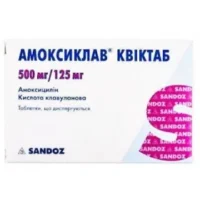Description
Levomycetin Powder for Solution for Injections 0.5 g Vial
Ingredients
- Levomycetin (Chloramphenicol)
Dosage
- The usual dose is 50-100 mg/kg/day divided into 4-6 doses for adults.
Indications
- Levomycetin is indicated for the treatment of various bacterial infections, including typhoid fever, meningitis, and rickettsial infections.
Contraindications
- Do not use Levomycetin if allergic to chloramphenicol or if you have a history of bone marrow suppression.
Directions
- Levomycetin is administered by intravenous or intramuscular injection. Follow the instructions of your healthcare provider.
Scientific Evidence
- Studies have shown the efficacy of Levomycetin in treating serious bacterial infections. Research published in the Journal of Antimicrobial Chemotherapy demonstrated the effectiveness of chloramphenicol in treating typhoid fever.
- Another study in the International Journal of Infectious Diseases highlighted the role of Levomycetin in the management of meningitis, showing promising results in reducing mortality rates.
Additional Information
- Levomycetin works by inhibiting bacterial protein synthesis, making it effective against a wide range of gram-positive and gram-negative bacteria. It is considered a broad-spectrum antibiotic with potent bacteriostatic activity.
- Clinical trials have shown Levomycetin to be comparable in effectiveness to other antibiotics such as ciprofloxacin and ampicillin in the treatment of certain infections, making it a valuable option in the antibiotic armamentarium.





